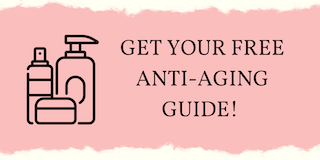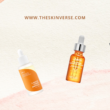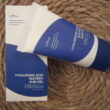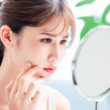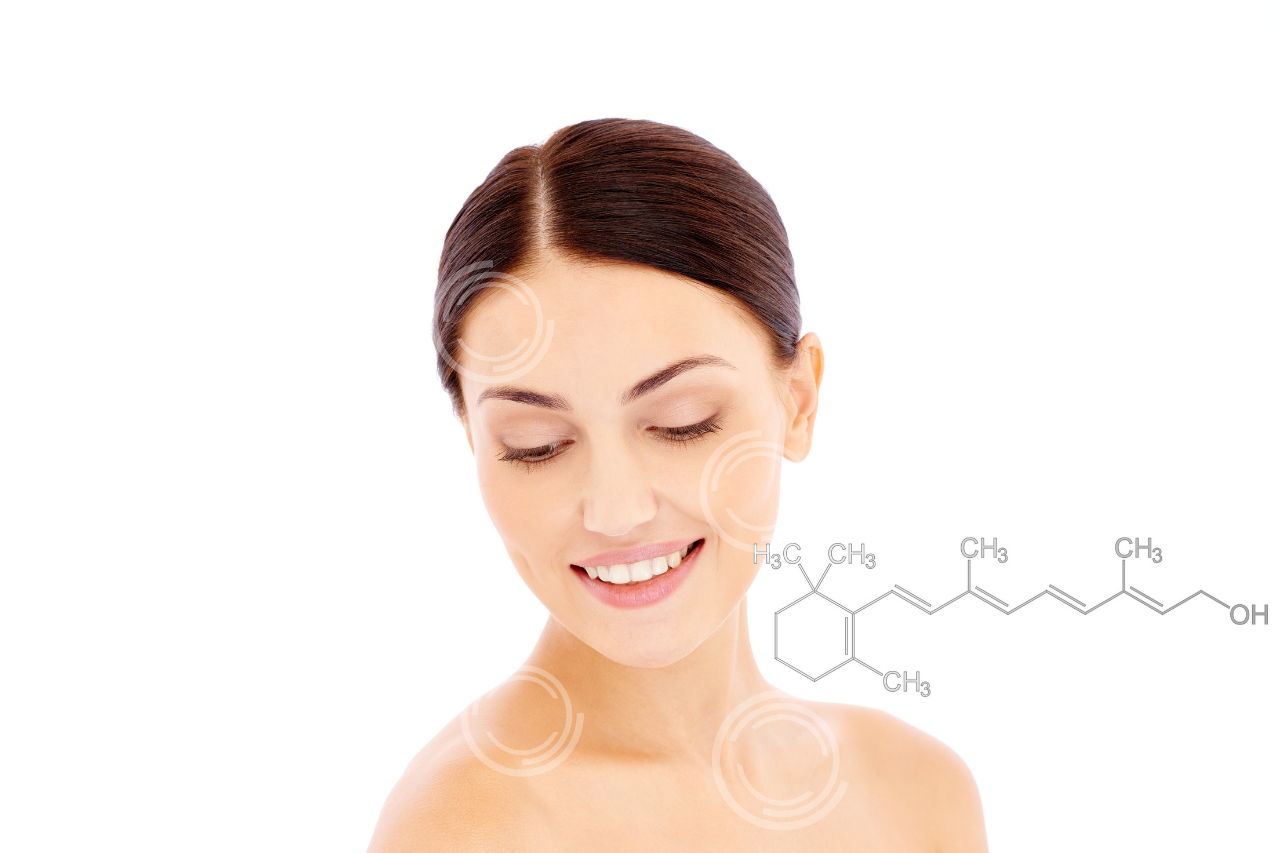There are many acids in skincare that serve various purposes. There are AHA and BHAs, for example, (hopefully you already use one of em) are acids that exfoliate the skin. The one we are talking about today, Kojic acid, is somewhat of a lesser-known acid.
Every other day, a new name is popping up in the ever-expanding skincare universe. You might be wondering, do I need another new acid in my skincare routine? That’s a valid question, of course. And the answer is, 1) it is up to you, we can’t tell you how to live your life 2) if you want to have glowing skin, then definitely yes! More on that, in a minute.
But first, what is Kojic acid anyway?
Kojic acid (KA) is literally made from mushrooms or through fermentation process of certain foods like Japanese wine made from rice – sake.
The main thing to bear in mind about it is that it acts as a lightening agent. In skincare, along with agents like niacinamide, retinol, alpha arbutin, it works by decreasing the production of melanin – main pigment that gives our skin its color. The science behind it is pretty simple: there is an amino acid called tyrosine that is imperative to melanin production. Kojic acid directly blocks that bad boy, which ultimately prevents the production of melanin.
It is no secret that skin discoloration and hyperpigmentation is mainly caused by excess melanin production. So, Kojic acid for skin is great for treating this kind of skin concerns. It is used in many products; creams, serums, lotions and treats sun damage, dark spots and age spots.
It also has a use in food industry, acting as a natural preservative.
Benefits of Kojic acid for skin
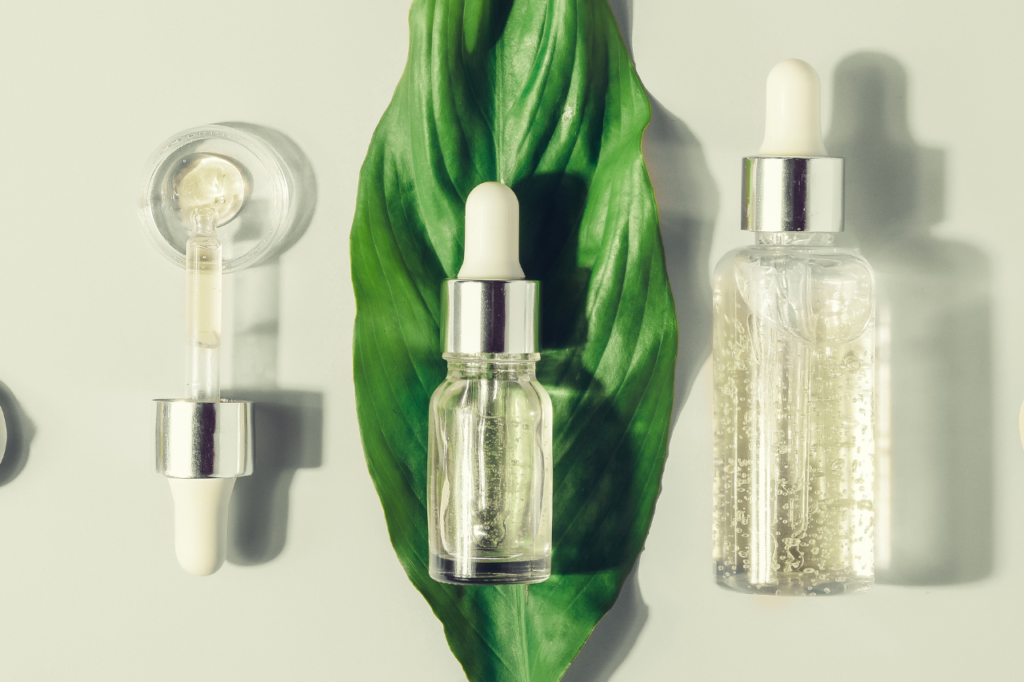
Skin brightening
Though benefits of Kojic acid for skin are vast, its main role is skin brightening. If you suffer from acne spots or dark spots, you should give this one a whirl. Because it doesn’t exfoliate like chemical exfoliants (AHA and BHAs), it only works by inhibiting melanin, thus lightening the skin. I feel like in that sense, it serves a very specific goal and makes the end result more effective.
It also less aggressive than the powerhouse lightening agent – hydroquinone which makes it more suitable for sensitive skin.
Anti-aging effect
Sun damage is the number one factor behind skin aging. If you haven’t put your SPF on today, do it now. Rain or shine, SPF all the way – my personal mantra.
Constant sun exposure causes dark spots on the skin. By tackling the dark spots, Kojic acid improves their appearance and limits the sun exposure.
Antioxidant properties
By fighting UV damage on the skin, Kojic acid fights free radicals that wreak havoc on cellular level.
Can help with acne scars
Acne scarring is usually associated with dark pigmentation around it. Due to its brightening effect, KA can fade this pigmentation and make it less noticeable to the naked eye. It has also proved to be very effective when used with a prominent AHA, Glycolic acid which is also known for its humectant (moisture attracting) qualities.
Treats melasma
Remember kojic acid preventing melanin production? Melasma happens when skin produces way more melanin (pigment) than it is supposed to. This study conducted among 40 women concluded that when used with 10% glycolic acid and 2% hydroquinone, Kojic acid was effective in further improving melasma. Over half of the women observed improvement on the side of their face where kojic acid was used.
How to use Kojic acid for skin? Top tips
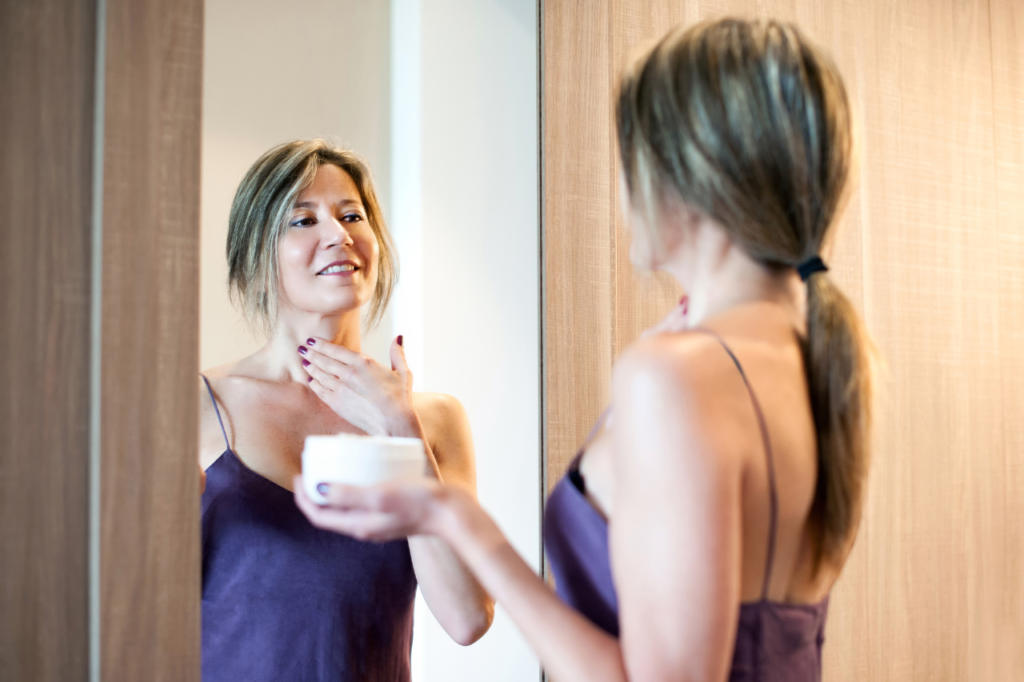
Just like with any product, always do a patch test before applying it directly on your skin. It is suitable for all skin types, however, if you sensitive skin like me, you have be extra cautious. Do a patch test on your arm and leave it on for 24 hours. If no irritation occurs, you are good to go!
If you are just starting out your Kojic acid skincare journey, stick to using it once of twice a week. Remember, less is more at the beginning. Once your skin has built that tolerance, you can gradually increase the frequency. For super sensitive skin people, it would be best to use products with lower consistency, like 1% or below. Generally, it is used at concentrations ranging from 0.1% to 2%.
You can also use KA in spot treatment, meaning you only apply it in areas that are affected by hyperpigmentation or discoloration. It is definitely a better way of avoiding possible full face irritation.
Always follow up with a moisturizer (preferably a soothing one) + sunscreen – the match made in heaven.
Tip: Use sunscreen with Kojic acid
Remember that KA makes your skin susceptible to UV lights. See melanin actually acts like a shield protecting your skin from sunburn. Because Kojic acid prevents melanin production in order to lighten the skin, the skin becomes more vulnerable to the sun. Thus, making it very important to wear sunscreen. Try to limit your sun exposure and seek shade whenever possible when using KA.
Tip: Use KA with Glycolic acid
You can achieve faster results with KA if you pair it with a powerful AHA, Glycolic acid. It has smaller molecules than other AHAs, so is has a better chance of penetrating the skin’s deepest layers. So, it will also help KA to penetrate into the skin better and boost its effectiveness. It is no wonder why so many brands combine KA and Glycolic acid in their skincare products.
Tip: Consistency is key.
Bear in mind that you won’t see results overnight. It will take around 6 to 12 weeks to see results in dark spots or in treating melasma. If you don’t see a result after 12 weeks of use, you can consult with your dermatologist and switch to a product with higher concentration, preferably formulated with additional skin lightening agents like alpha arbutin, niacinamide, or glycolic acid. (Remember, talk to your doctor first before taking any action).
Best products with Kojic acid (KA)
Products with KA are quite unique. At least, in my opinion. There aren’t that many, but they are very effective.
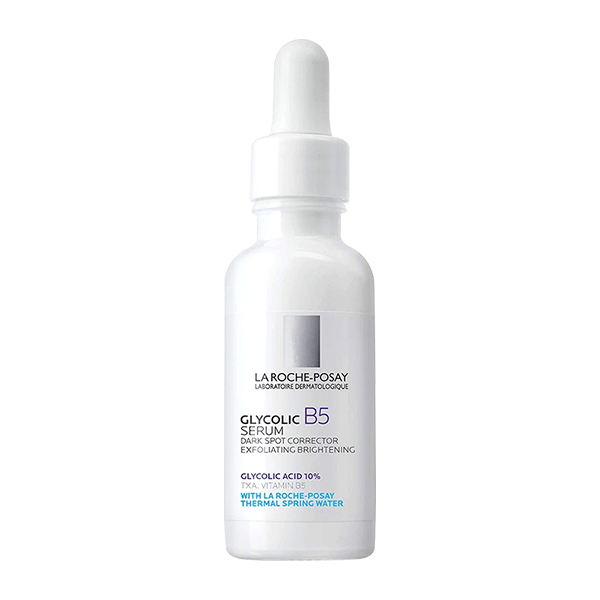
La Roche-Posay Glycolic B5 Dark Spot Corrector
Formerly known as La Roche-Posay Mela-D Pigment Control, this is a nighttime serum that has the A team for dark spots – Glycolic and Kojic acid. Glycolic exfoliates the skin while KA works toward blocking melanin production. It also includes Vitamin B5 – Panthenol which is very soothing and moisturizing on the skin. What’s more? It is free of any fragrance and is non-comedogenic, meaning it won’t cause any breakouts on your skin.
Use it after cleansing, toning in the PM routine before locking everything in with your nighttime cream.
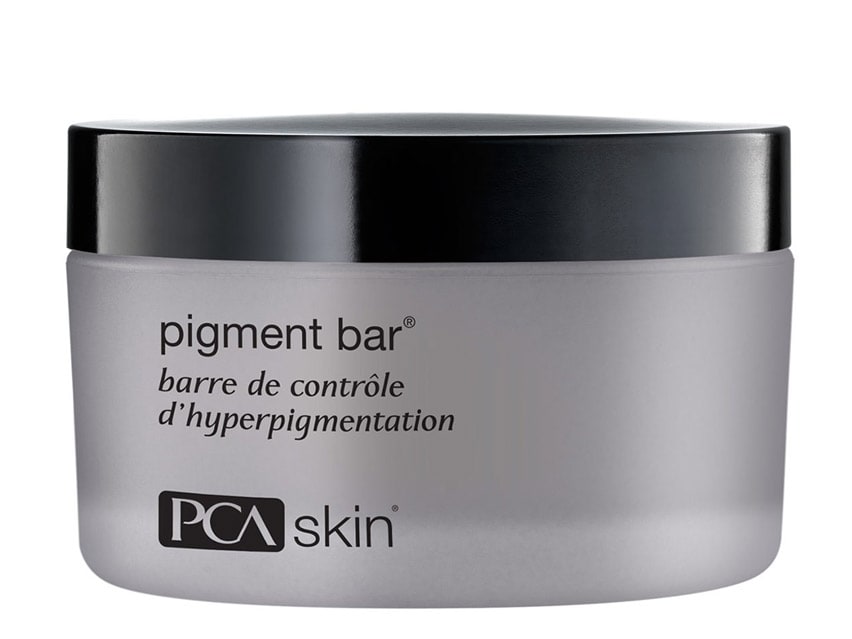
PCA Skin Pigment bar with Kojic acid
This one is truly all in one, skin lightening cleansing bar. Although I think using Kojic acid in serum of cream forms are better, using a cleanser can only add to your existing routine. Especially, if you want to treat some areas on your body.
It is made with three A-list skin brightening agents – Azelaic acid, Niacinamide and Kojic acid. While all these names work toward brightening the skin, they also leave the skin hydrated due to Vitamin B3, aka Niacinamide.
The product comes with a sponge that is very handy. Wet the sponge and then you will see it turns into creamy texture. Leave it on for a few minutes and then rinse off. You can use it in your AM or PM routine, just don’t forget about finishing off with SPF in the morning.
Are there any side effects of Kojic acid on skin?
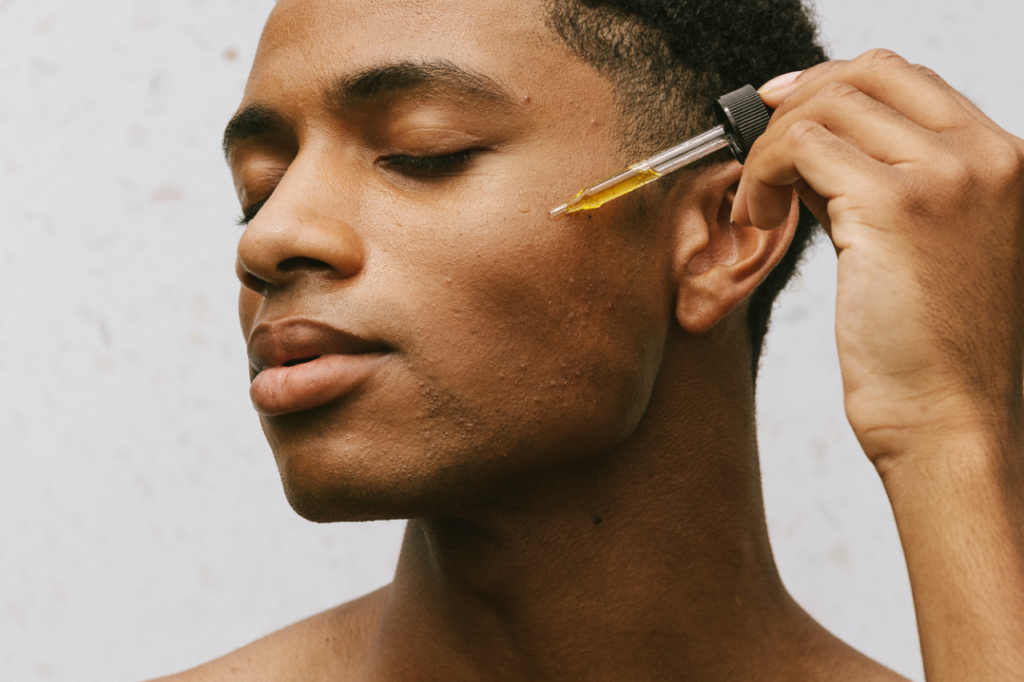
The expert panel at Cosmetic Ingredient Review (CIR) concluded that KA at 1% and below is considered safe to use. Side effects are uncommon, H=however, it can irritate the skin (especially if your skin is sensitive), cause burning or itching sensation on the skin. Contact allergy is also a thing with KA. In case you experience such side effects, stop using KA and talk to your doctor.
In order to prevent such cases, it would better so start with lower concentrations like 0.1 % or 1%. Only use it once or twice a week and don’t overdo it.
FAQ on Kojic acid for skin
What is Kojic acid?
Kojic acid is an antioxidant that is derived from fungi (mushrooms) and certain fermented foods like Japanese rice wine.
What are the benefits of Kojic acid for skin?
Kojic acid is used as a skin lightening agent in skincare products. It helps fade dark spots, age spots and sun spots. It is also very effective in melasma treatment due to its ability to block melanin (pigment) from appearing on the skin.
These are the main benefits of kojic acid for skin:
- Helps fade dark spots and hyperpigmentation;
- Is a natural skin lightening agent;
- Brightens the skin;
- Treats certain skin conditions like melasma
Is Kojic acid suitable for all skin types?
Yes, KA is suitable for all skin types.
Is it safe to use Kojic acid for skin?
Yes, it is safe to use Kojic acid for skin in products with a concentration of up to 1%. It is also strongly recommended to use SPF as KA makes the skin more vulnerable to the damaging UV rays.
What are the side effects of Kojic acid?
Common side effects of Kojic acid include itchiness, burning or redness. As a prevention, it is better to use lower concentrated products and do a patch test before applying it all over your face or a larger area of your skin.
Can Kojic acid cause tumor?
This is a common question asked. Short answer is, no.
The same expert panel at Cosmetic Ingredient Review (CIR) did note that some animal data suggest tumor promotion. Because Kojic acid is slowly absorbed into the circulation from human skin, there is no reason to believe that it would reach the threshold at which a tumor growth is observed.
Is hydroquinone better than Kojic acid?
Generally speaking, hydroquinone is considered a more potent ingredient in skin brightening. It can also be aggressive, especially if you are dealing with sensitive skin that has damaged skin barrier. So, Kojic acid is a better, gentler alternative.
Can I use Kojic acid if I have dark skin?
Yes, it is safe to use Kojic acid if you have dark skin. It is not going to change the natural color of your skin. Remember that it might take some more time to see instant results, since darker skin tones naturally produce more melanin. So, it is gonna take some time for KA to do what it does and prevent melanin.
How is Kojic acid labeled in skincare products?
It is mainly listed as Kojic acid, or simply KA.
In conclusion
To sum everything up, KA is a great antioxidant that works as a brightening agent. It is gentler on the skin, and should be used at product concentrations of up to 1%.
So, if you suffer from dark spots or sun spots on your skin, KA can be your next skincare hero to try!

